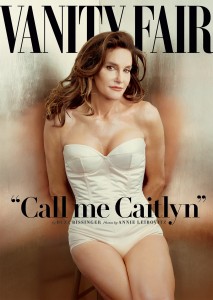 By now, we are all aware of Bruce Jenner’s story and the subsequent media storm that followed his public transformation and reveal. Since the June 1 unveiling of Jenner’s Vanity Fair cover story, this story has been everywhere—it has headlined virtually every news source, overtaken every social media property and has been stitched into every leisurely phone, lunch or dinner conversation. And what does that mean exactly? It means that, whether you’re sick of the story or not, the media blitz surrounding Bruce Jenner’s public transformation has been nothing short of brilliant— from Diane Sawyer’s two-hour “20/20” interview special to the buzz of the June 1 Vanity Fair cover reveal of Caitlyn. As Josef Adalian so eloquently put it in a recent Vulture feature, “..[I]nstead of trying to sell a product or cover up a scandal, this effort had a different aim: to allow its subject the chance to reclaim ownership of her own story.” An examination of the Caitlyn Jenner media relations strategy provides us with a paradigm we as PR practitioners can all take a lesson (or four) from.
By now, we are all aware of Bruce Jenner’s story and the subsequent media storm that followed his public transformation and reveal. Since the June 1 unveiling of Jenner’s Vanity Fair cover story, this story has been everywhere—it has headlined virtually every news source, overtaken every social media property and has been stitched into every leisurely phone, lunch or dinner conversation. And what does that mean exactly? It means that, whether you’re sick of the story or not, the media blitz surrounding Bruce Jenner’s public transformation has been nothing short of brilliant— from Diane Sawyer’s two-hour “20/20” interview special to the buzz of the June 1 Vanity Fair cover reveal of Caitlyn. As Josef Adalian so eloquently put it in a recent Vulture feature, “..[I]nstead of trying to sell a product or cover up a scandal, this effort had a different aim: to allow its subject the chance to reclaim ownership of her own story.” An examination of the Caitlyn Jenner media relations strategy provides us with a paradigm we as PR practitioners can all take a lesson (or four) from.
1. Creating a Culture of Trust
The behind-the-scenes director of the media relations master plan has been Alan Nierob, a longtime entertainment publicist executive at Rogers & Cowan. Nierob has done PR for some of Hollywood’s biggest stars, including Robert Downey Jr. and Mel Gibson, but sources close to the situation say Jenner turned to Nierob for a particular reason —Jenner has known Nierob both professionally and personally for decades and trusts him immensely. As stated in a recent article by Al Mellis of TVGrapevine, when Jenner was approached by The New York Times decades ago with questions about cross-dressing, he confided in Nierob about his desire to undergo a sex change. Nierob was never formally hired as Jenner’s representative, but instead helped him out as a friend. According to Mellis,“..[Nierob] used all of the PR pressure tricks: strenuous denials, questioning the motives of his sources and emphasizing the ramifications of such a story for Jenner and his family. “In the end, no story ever ran. So, when the time came to go public with the transformation, it is clear that Jenner’s camp turned to Nierob because of the relationship of mutual trust and respect the two had established over the years, both in and out of the workplace.”
2. Taking Ownership of the Story
Once Jenner officially hired Rogers & Cowan, the agency began putting together a carefully crafted strategy to introduce the world to Caitlyn, while waving goodbye to Bruce. The plan focused on Jenner taking ownership of the story by telling it in her own words. It wouldn’t be hard to find an outlet willing to enable Caitlyn to do so—Jenner was constantly receiving interview requests from reporters who wanted to confirm or deny rumors. After much thought, Nierob reached out to Diane Sawyer for what he knew would be a historical broadcast moment for the transgender community. “He knew it had to be serious and substantive to dispel any suggestion that the emergence of Caitlyn was a publicity stunt,” said Mellis. The decision to follow up the TV interview with the unveiling of a print magazine cover shot was also meticulously organized, decidedly traditional (a television and print exclusive are nothing new in today’s PR world) and carefully crafted, as the team chose Vanity Fair, arguably the most influential fashion magazine in print today.
3. Silence Can be Golden
If the decisions to unveil Caitlyn Jenner in a monthly magazine, following a TV interview on ABC, were traditional in nature, then the mutual decision (made by both the Jenner and Vanity Fair camp) to keep the Bissinger cover story and photo shoot a secret right up until the moment it was revealed on June 1, were undeniably nontraditional. Just ask Beyoncé, who revealed a secret album to record download numbers and critical acclaim.
After a tweet reading “Call me Caitlyn” along with a photo of the cover shot appeared on the Vanity Fair handle, Caitlyn herself emerged on Twitter a few minutes later, quickly gaining more than 1 million followers within four hours. The tweet itself now has more than 33,000 retweets and Caitlyn more than 2.5 million followers. Like the Sawyer interview, the Vanity Fair reveal received near universal approval, and even acclaim, showing that a media blitzkrieg, if executed to perfection can take both the traditional and social media world by storm.
4. Sustaining Momentum After the Initial Media Blitz
It’s one thing to create a wave of media publicity around an unveiling and it’s another to sustain it. As with any successful campaign, the Jenner transformation plan isn’t over, and the team has worked relentlessly to sustain momentum around the reveal in the press. Caitlyn Jenner plans to make her first significant public appearance at next month’s ESPY Awards, where she’ll receive the Arthur Ashe Courage Award. The news was reported in the Vanity Fair article in conjunction with a press release.
Then, of course, there’s her E! show, recently titled “I Am Cait,” which generated more than 4.5 million views within 24 hours from a one minute promo. As Adalian states, this strategy— as with the rest of the media relations strategy—seems to be carefully calculated. “It’s also almost certainly no coincidence that Jenner will appear in public before her E! show premieres. Just as the Vanity Fair interview was, in a way, an answer to potential critics who believed the Jenner camp was ‘saving’ the reveal of the woman we now know as Caitlyn for the E! show, having Caitlyn Jenner give an acceptance speech and interact with other celebrities at a big public event further aids the strategy in blunting the cynicism: She is not holding back the walking, talking version of herself for E! — for ‘profit.’” In addition, appearing at the ESPYs will also undoubtedly allow Jenner to reconnect with her athletic roots and the athletic community she was once atop.
It’s not to say that Caitlyn Jenner’s transformation has been without speedbumps. There have been the naysayers, the hateful internet commenters and of course the fatal crash on PCH that took the media by storm. But without question, the PR media strategy employed by Nierob and the Jenner camp has enabled Jenner to tell her story in her words, allowing her to shape her image in the media. If that isn’t success in today’s age of sensationalized media coverage, I don’t know what it is.
